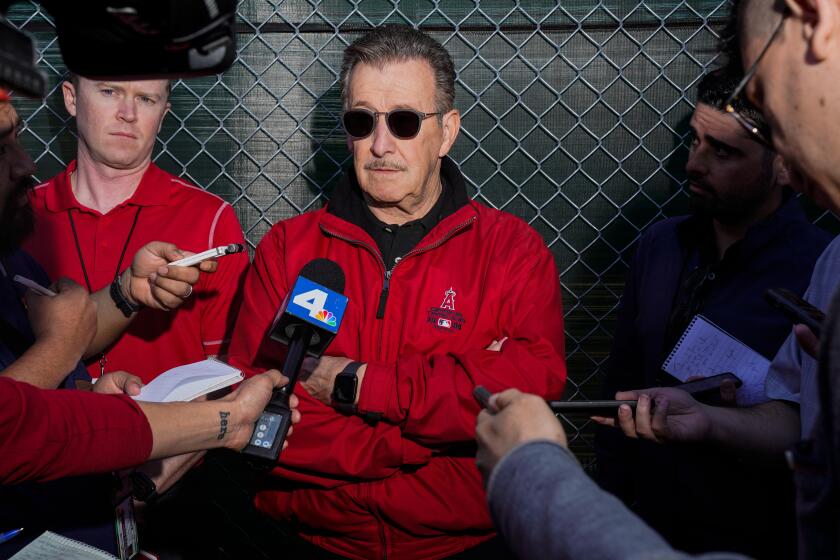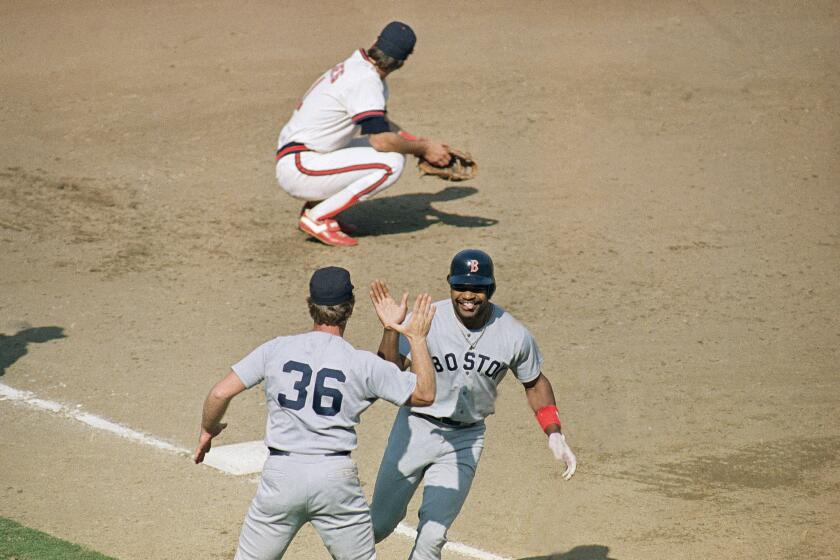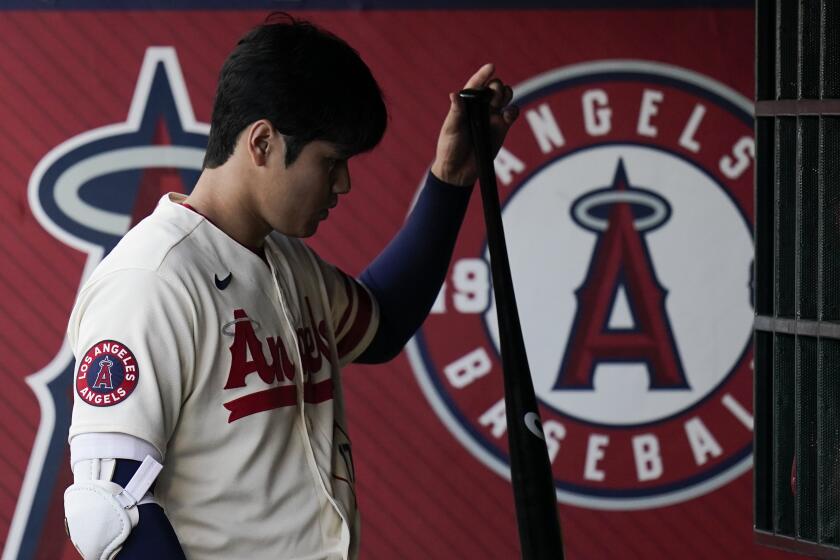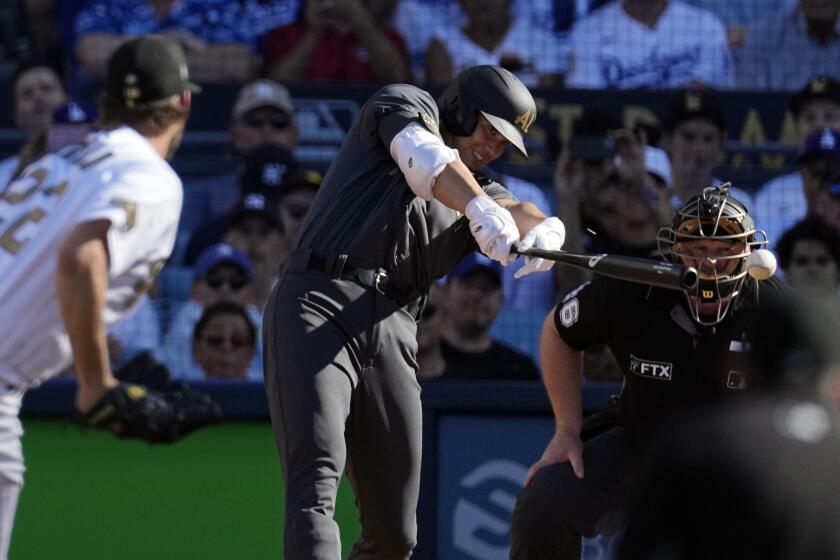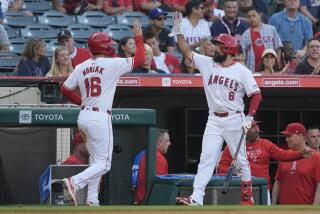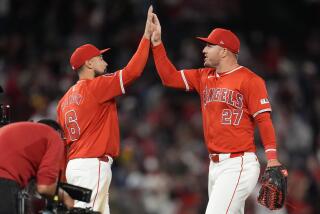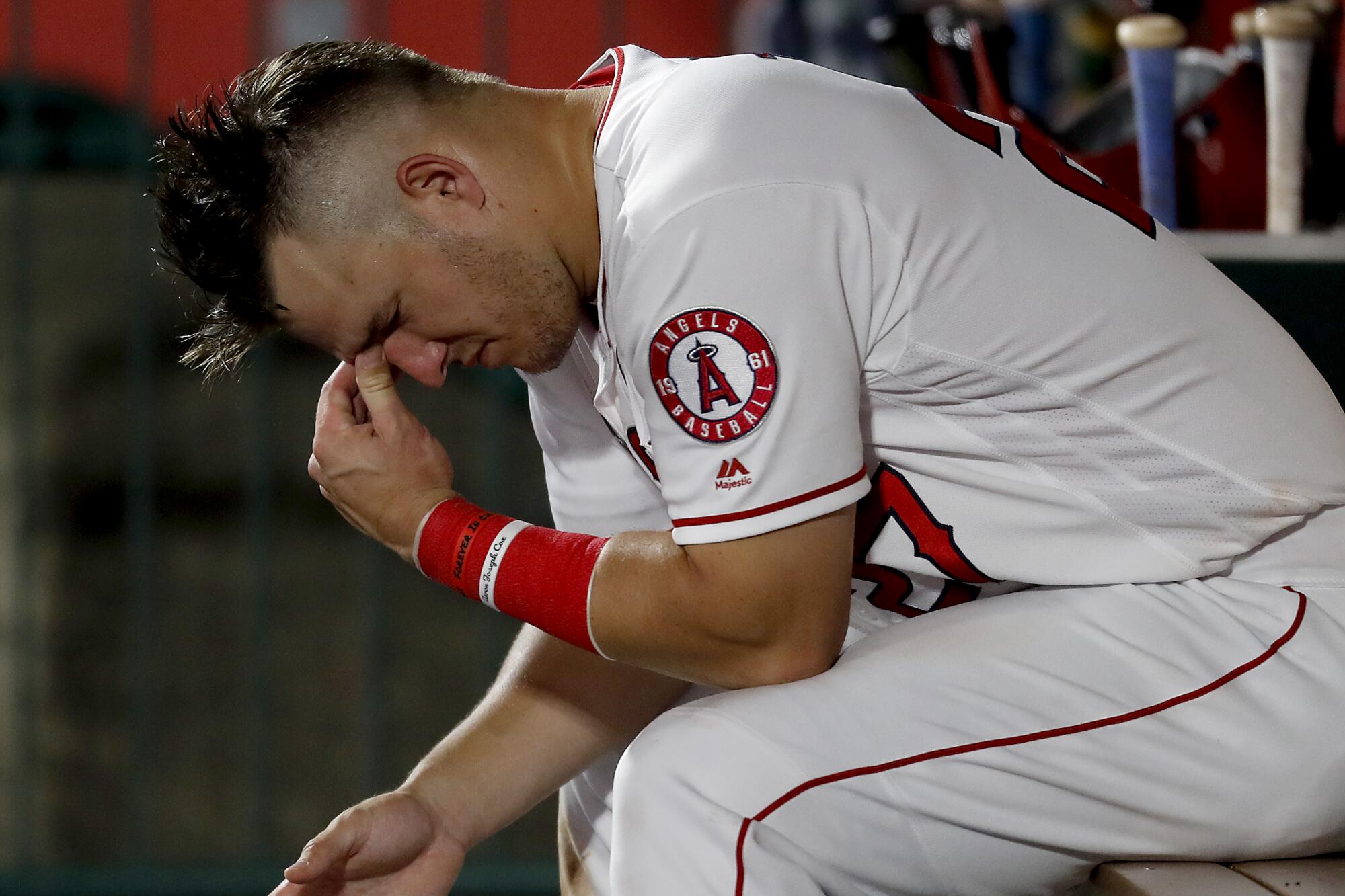
- Share via
John Carpino and Joe Maddon sat in a nondescript conference room for a video call in late September 2020, the Angels’ team president and then-manager conducting a postmortem on yet another disappointing season, this one ending with a sixth straight empty October and the firing of a general manager.
“Obviously, we’re not doing it the right way, we’re not winning games,” Carpino said after the Angels failed to make an expanded 16-team playoff field in the pandemic-shortened season. “So, something is not right in our organization.”
Nearly two years later, little is right in the organization.
The Angels, despite employing a pair of generational talents in center fielder Mike Trout and two-way phenom Shohei Ohtani, are spiraling toward their seventh consecutive losing season, which would match a stretch from 1971 to 1977 for the longest streak of futility in franchise history.
They’ve shelled out more than $1 billion to free agents over the last 12 years, including $245 million to Anthony Rendon, $240 million to Albert Pujols and $125 million to Josh Hamilton, another half-billion in two contracts to Trout and have zero playoff victories to show for it, their last postseason win coming in 2009.
The Angels have gone from 11 games over .500 in mid-May this season to 19 games under .500 (52-71) after Tuesday night’s 11-1 road loss to the Tampa Bay Rays, their promising start dissolving into a haze of strikeouts, bullpen meltdowns, fielding miscues and injuries.
If the Angels decide to move Shohei Ohtani before the MLB trade deadline on Tuesday, it would be the biggest loss in a season defined by failure.
Maddon was fired June 7, near the end of a franchise-record 14-game losing streak. Things got worse under interim manager Phil Nevin, the Angels falling so far out of contention that they were sellers at the Aug. 2 trade deadline, dealing closer Raisel Iglesias to Atlanta and starter Noah Syndergaard to Philadelphia.
Ohtani, the reigning American League most valuable player and baseball’s most luminous star, has made it clear that he wants to play for a World Series contender, greatly increasing the chances he is traded either this winter or next summer or departs as a free agent after 2023.
Trout, a three-time AL MVP, missed most of 2021 because of a calf strain and another month this summer because of a chronic back condition that has cast some doubt on the 31-year-old’s ability to perform at peak levels for the remaining eight years (and $283.6 million) of his contract.
Rendon, an All-Star third baseman who signed his mammoth seven-year deal before 2020, has played just 103 games in the last two years, suffering a season-ending hip injury in July 2021 and a season-ending wrist injury this June.
Instability has hampered the front office and coaching staff — the Angels are on their fourth manager in five years and fourth general manager in 12 years — and more housecleaning is expected this offseason.
A farm system that is ranked 29th out of 30 teams by Baseball America and 28th by MLB Pipeline has failed to provide enough reinforcements for big league rosters racked by injuries and underperforming players.
The Angels have not produced a homegrown star through the draft in 12 years. Their last front-line regular acquired as an international amateur was shortstop Erick Aybar, who signed in 2002 and last played for the Angels in 2015.
The club is on pace to sell fewer than 2.6 million tickets in 2022, the first full season since Arte Moreno bought the team in 2003 that it will have not sold 3 million tickets. Empty seats outnumber spectators on most nights that Ohtani doesn’t pitch.
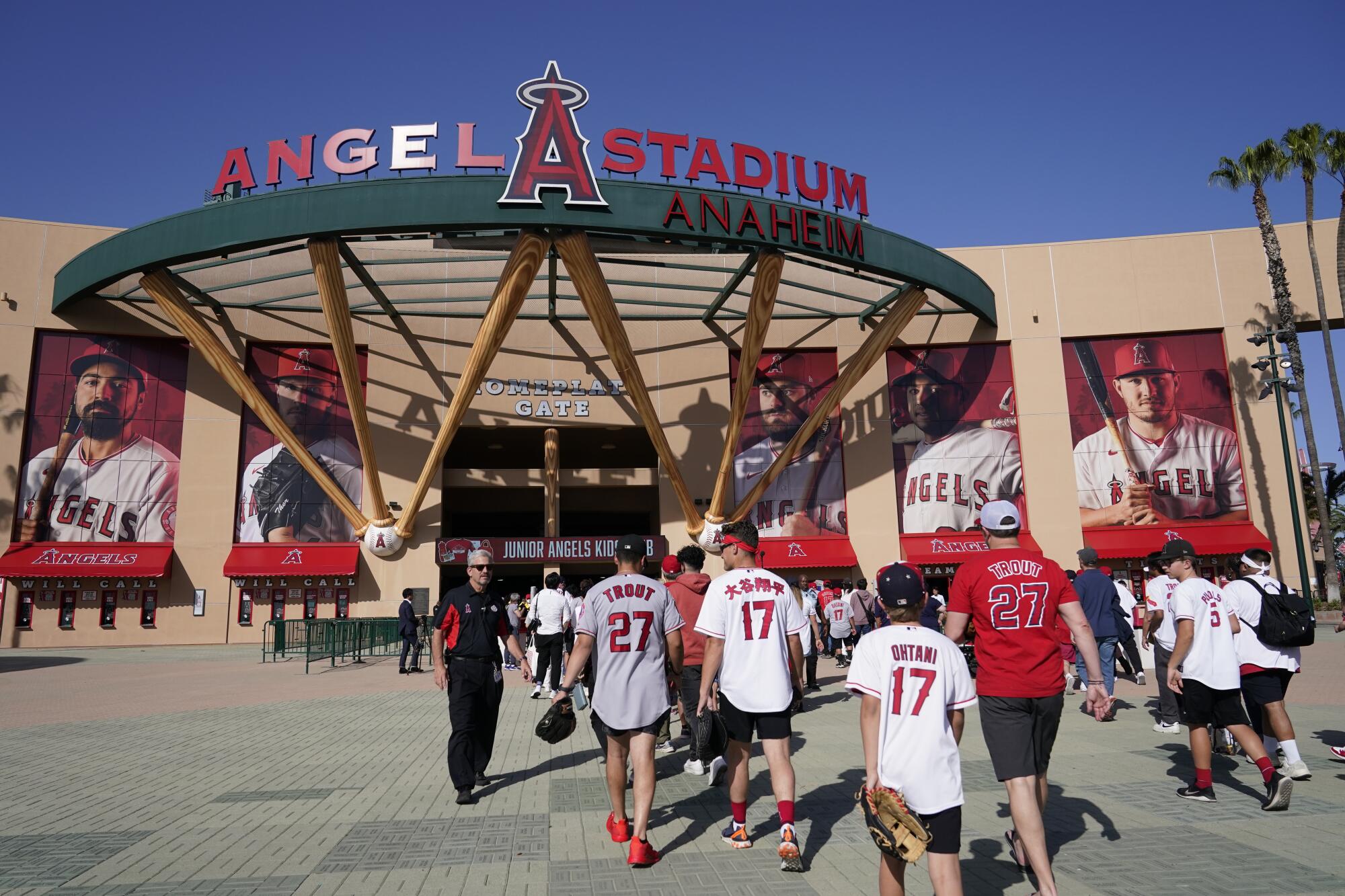
Fans, some of whom have taken to wearing paper bags over their heads, are so fed up and frustrated with the losing that Moreno, once praised for lowering beer prices and spending aggressively on free agents, is a constant target of social media scorn and has been booed during on-field ceremonies.
Then came Tuesday’s bombshell announcement that Moreno is exploring a possible sale of the team that he purchased for $183.5 million and is now worth $2.2 billion, according to Forbes magazine’s latest franchise valuations.
“Although this difficult decision was entirely our choice and deserved a great deal of thoughtful consideration,” Moreno said in a team-issued statement, “my family and I have ultimately come to the conclusion that now is the time.”
Arte Moreno has started exploring the possibility of selling the Angels, the team announced, and has taken on Galatioto Sports Partners as financial advisors.
Off the field, the Angels are defendants in two high-profile lawsuits, a wrongful-death action by the family of Tyler Skaggs, which alleges the team should be financially liable for the fentanyl-related death of the pitcher in 2019, and a defamation action by former clubhouse manager Bubba Harkins, who was fired in 2020 for providing a blend of sticky substances to visiting pitchers to aid their grip of the baseball.
The Angels also have no long-term plan for their 56-year-old stadium. Moreno had agreed to buy Angel Stadium and the surrounding parking lots from the city of Anaheim, then build a ballpark village and use development profits to renovate the current stadium or put up a new one.
But the City Council killed the deal after revelations that the FBI is investigating the now-former mayor for public corruption, and the Angels now play under a lease that expires in seven years.
There are ebbs and flows in the life of every franchise, but if this isn’t rock bottom for the Angels, who were born in 1961 and won their only World Series title in 2002, they can sure see it from here.
“This could be an all-time low point,” said Mark Tuerffs, 66, a lifelong Angels fan and season-ticket holder since 1978. “I mean, how much lower can you get?”
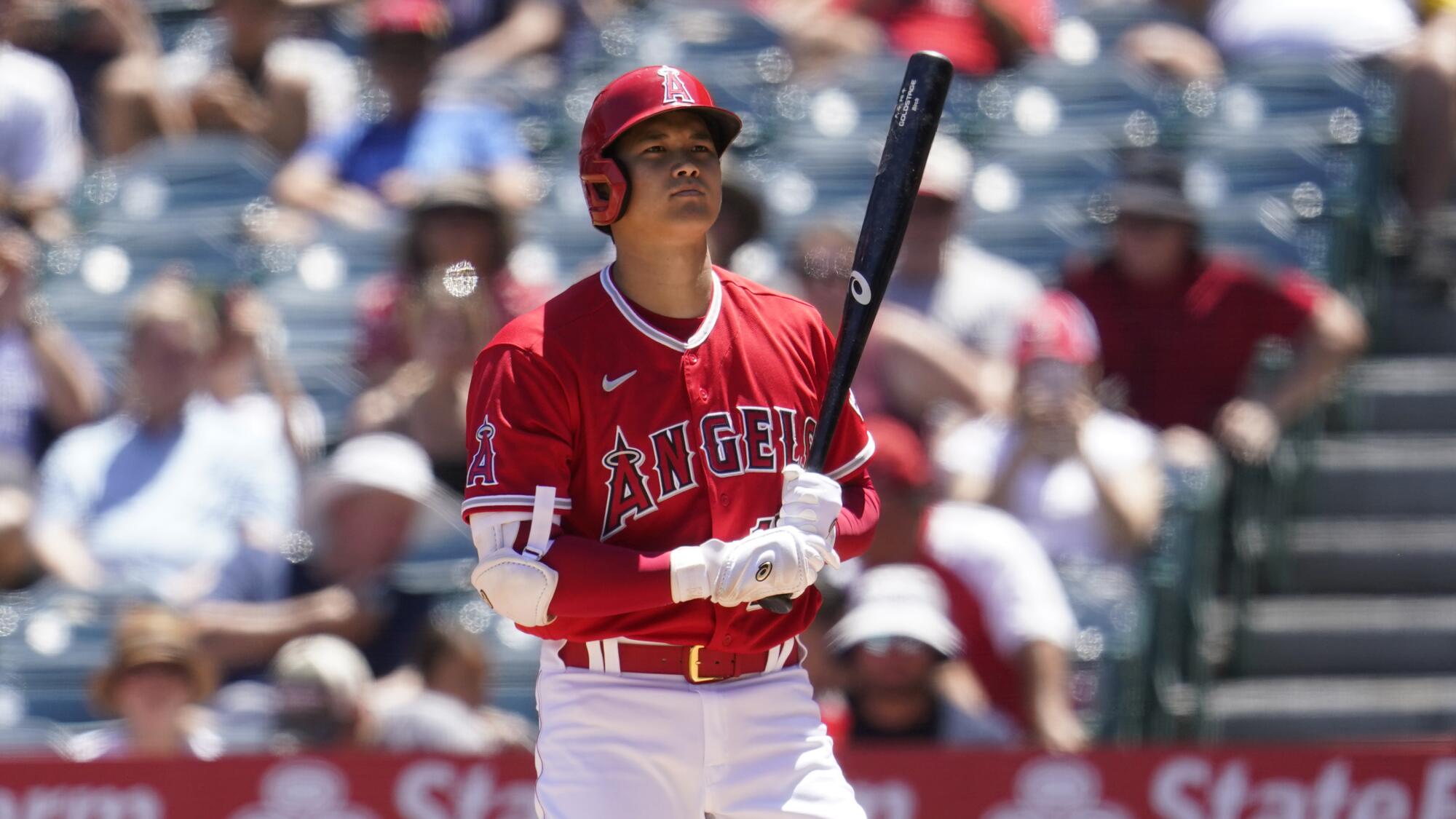
There is no easy fix for these fallen Angels. They have $103 million committed to six players for 2023, most of it to Trout and Rendon, and Ohtani could command $30 million in his final year of arbitration, pushing that figure to $133 million for seven players.
The Angels must determine early this offseason whether they can sign Ohtani to a long-term extension. If not, they will have little choice but to try to trade him for the kind of package the Washington Nationals received from the San Diego Padres for slugger Juan Soto in early August.
If Ohtani remains, the Angels would still need another starting pitcher or two to boost a rotation that includes promising young left-handers Reid Detmers, Patrick Sandoval and José Suarez, a closer and two or three more reliable relievers.
They need a better-hitting shortstop, a power-hitting corner outfielder and perhaps a new first baseman and catcher to bolster a thin lineup that — unlike pitching-poor teams of the past — has been the primary culprit in this season’s demise. The bench needs to be upgraded. And, of course, Rendon, Trout and Ohtani need to stay relatively healthy.
There will be some attractive free agents this winter. New York Mets ace Jacob deGrom said he plans to opt out of his contract. Chris Bassitt, Jameson Taillon, Michael Wacha, Mike Clevinger, Corey Kluber and Syndergaard are solid second-tier rotation options.
Trea Turner and Dansby Swanson head a superb free-agent shortstop class that could include Xander Bogaerts of the Boston Red Sox and Carlos Correa of the Minnesota Twins if they opt out of their contracts. New York Yankees slugger and major league home run leader Aaron Judge will be a free agent.
But the prices for top players will be steep and the competition for them fierce. If Ohtani opens next season in Anaheim, the Angels must reach the playoffs and, perhaps, contend for the AL pennant, to have any chances of retaining him beyond 2023, a massive, but not impossible, leap from where they now stand.
“Through free-agent acquisitions and trades, you can build a legitimate pitching staff and make the playoffs next year with some of the offensive pieces they have,” former Angels catcher Chris Iannetta said. “But they’re going to have to do a lot of things right, and one of those is to spend money.”
The Angels spend plenty of money. They’ve been among the top 10 teams in competitive balance tax 40-man payrolls in every one of the 19 years Moreno has owned them.
They just haven’t spent it very wisely or dug deep enough into their pockets to win bidding wars for players who could have been difference-makers.
The Angels were outbid by the Yankees for slugger Mark Teixeira after 2008, and the first baseman helped New York win the 2009 World Series.
They refused to go to a sixth year for Adrián Beltré after 2010, and the third baseman hit .296 with 32 homers and 105 RBIs to lead Texas to the World Series in 2011, the start of a superb six-year run with the Rangers.
After whiffing in their attempts to sign Beltré, outfielder Carl Crawford and pitcher Cliff Lee after 2010, the Angels traded catcher Mike Napoli, who could not live up to the defensive demands of then-manager Mike Scioscia, and Juan Rivera to Toronto for Vernon Wells, who had four years and $86 million left on his deal.
Thirty-five years later, Al Michaels says Game 5 of the 1986 Red Sox-Angels ALCS is second only to the “Miracle on Ice” as the greatest game he’s called.
Wells was a dud, the outfielder hitting .222 with 36 homers and 95 RBIs in two years in Anaheim before being traded to the Yankees.
Napoli moved to first base and blossomed, playing for World Series teams in Texas (2011), Boston (2013) and Cleveland (2016) and crushing the Angels at every turn, hitting .317 with a 1.048 on-base-plus-slugging percentage, 21 homers and 48 RBIs in 77 career games against his former club.
The Angels still had a solid power-hitting first baseman in Mark Trumbo, who hit 29 homers as a 25-year-old in 2011, but that didn’t stop Moreno from leading the effort to sign Pujols, then 32, to a 10-year, $240-million deal in December 2011.
Slowed by lower-body injuries for much of his 9½-year career in Anaheim, Pujols was a shadow of the slugger who put up Hall of Fame numbers in St. Louis from 2001 to 2011.
The Angels acquired ace Zack Greinke at the trade deadline in 2012 but lost the right-hander to a six-year, $147-million offer from the Dodgers the next winter.
Instead of investing in another front-line pitcher, Moreno and Carpino traveled to Texas — without then-GM Jerry Dipoto — to close a five-year, $125-million deal with Hamilton, the 2010 AL MVP who had a history of substance abuse problems.
The Angels started the season as one of baseball’s best teams before a 14-game losing streak sent them spiraling.
Hamilton suffered a relapse in the spring of 2015 and was traded to the Rangers that April, the Angels eating $61 million of his contract.
In perhaps their biggest swing and miss, the Angels were among the top three bidders for ace Gerrit Cole, the Orange County native who signed a nine-year, $324-million deal with the Yankees before 2020.
“They made it clear they wanted Gerrit,” agent Scott Boras said, “but they weren’t willing to go to the top levels.”
Iannetta, who was active in the players association during a 14-year big league career that included four seasons (2012 to 2015) in Anaheim, sees Moreno’s unwillingness to go that extra yard as an impediment to success.
The Angels paid a luxury tax only once under Moreno, in 2004, when they exceeded the threshold of $120.5 million by about $4 million, drawing a nominal fine of $927,000. To compete in 2023, they will have to push their payroll toward — or beyond —the $233-million threshold.
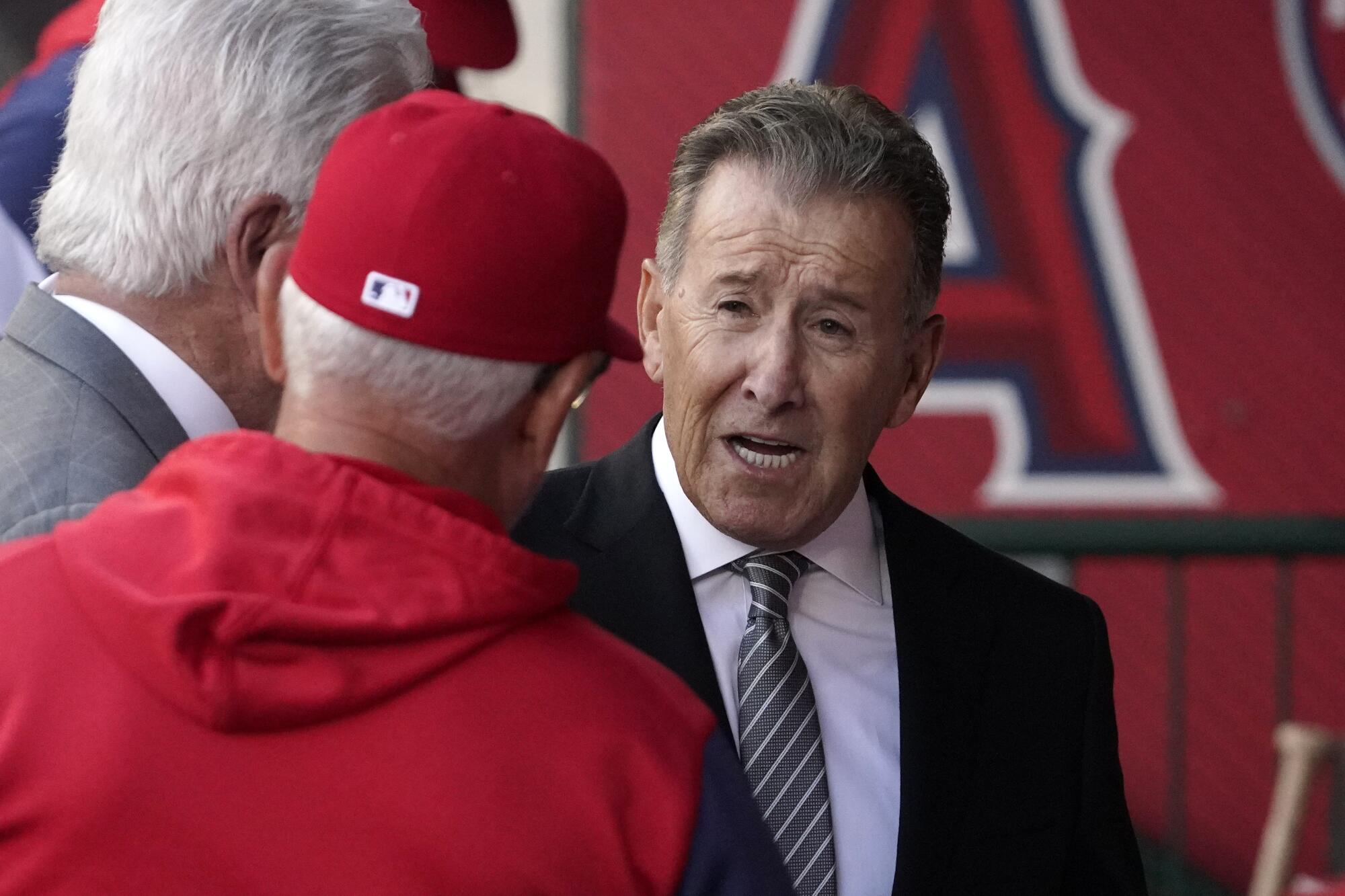
Moreno was one of four owners who reportedly opposed increasing the luxury tax during last winter’s negotiations for a new collective bargaining agreement.
“Arte is not going to go over that tax threshold — he treats it as a hard cap, and that’s unfortunate,” Iannetta said this month, before Moreno announced that he might sell the team. “It’s really doing a disservice to his season-ticket holders, to the game, and to all of the players who really want to win.”
Boras, the game’s most powerful agent, praised Moreno for “doing things that everyone would ask an owner to do” in terms of spending, and Carpino for his handling of business affairs — stadium operations, advertising, negotiating a 20-year, $3-billion television deal with Fox Sports West in 2011.
“But every situation requires a winning intellect … and to have a hard-and-fast rule that you will never go beyond the luxury tax [threshold], to me, that does not fit winning,” Boras said. “I’m not saying you have to exceed barriers all the time, but you have to be prepared to [stretch payroll] to adapt to the market.”
Carpino declined to be interviewed for this story. So did Moreno. The owner has not spoken to local reporters since November 2020, when he appeared on a video call announcing the hiring of new GM Perry Minasian.
José Mota, who spent two decades as an Angels broadcaster before joining the Dodgers’ broadcast team this season, remembers the feeling in the Kauffman Stadium visiting clubhouse after the Angels were swept by the Kansas City Royals in the 2014 AL Division Series.
Amid the disappointment of a series in which the Angels scored six runs in three games was a ray of hope. Trout was 23 and already the clear-cut best player in baseball. Pujols, then 35, recovered from the foot injuries that limited him to 99 games in 2013 to hit 28 homers and drive in 105 runs in 2014.
“Guys were like, ‘Hey, we got a taste of it, we know what it takes,’ ” said Mota, who covered Scioscia-led teams that won the 2002 World Series and five division titles from 2004 to 2009. “They were like, ‘OK, let’s start another run.’ ”
They never got out of the blocks. Jered Weaver, the team’s ace from 2010 to 2014 and a 20-game winner in 2012, lost the velocity of his fastball and went 19-24 with a 4.86 ERA in 57 starts from 2015 to 2016 before being released.
Budding ace Garrett Richards recovered from 2014 knee surgery to go 15-12 with a 3.65 ERA in 2015 but was limited by arm injuries to 28 starts from 2016 to 2018.
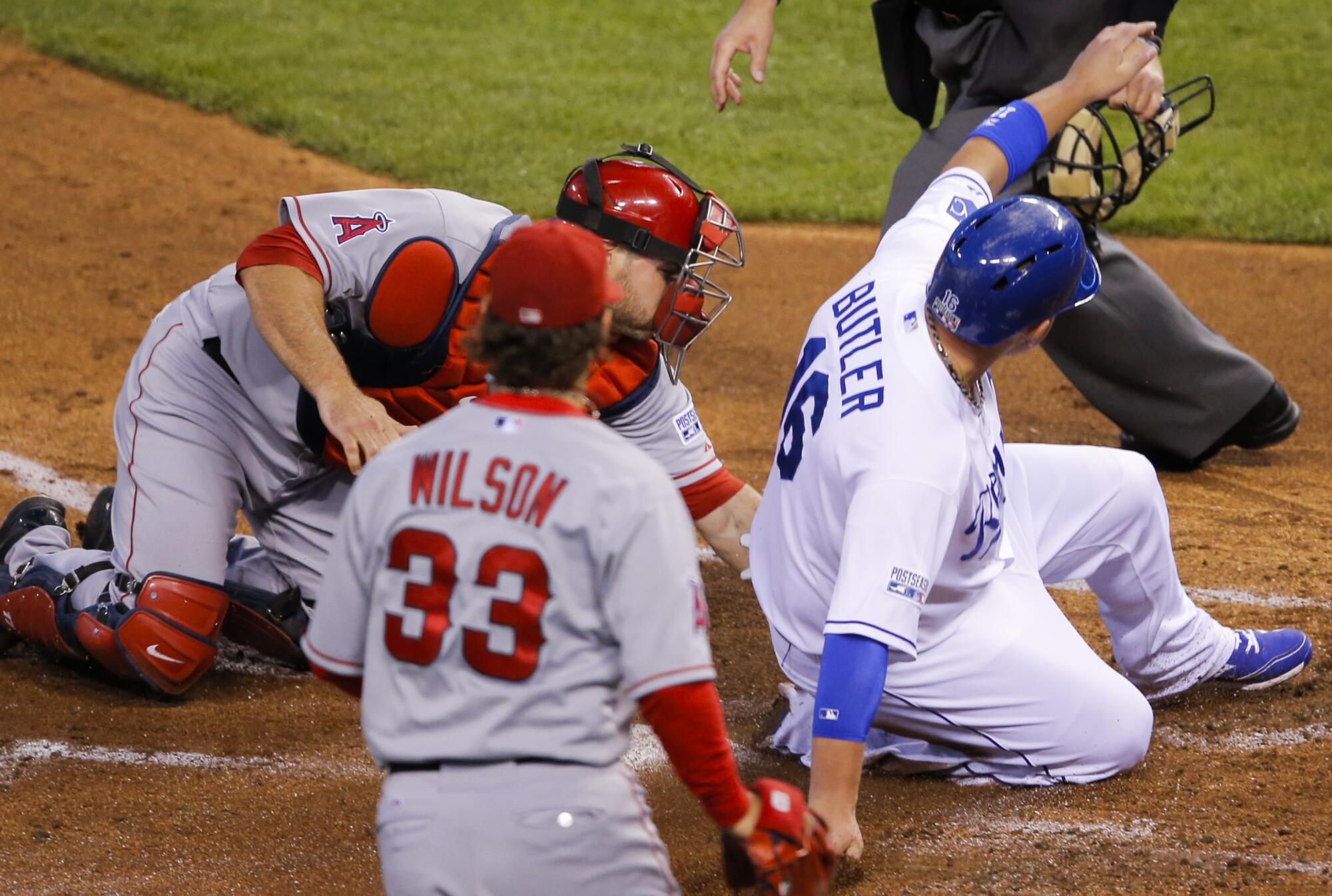
Left-hander C.J. Wilson, signed to a five-year, $77.5-million deal before 2012, had elbow surgery in August 2015 and didn’t pitch again. Hamilton suffered his relapse in the spring of 2015. Pujols put up good numbers in 2015 and 2016 before age and injuries caught up with him.
Dipoto resigned amid a power struggle with Scioscia in July 2015 and was replaced by Billy Eppler that October. The Angels went 85-77 but finished third in the AL West.
They haven’t sniffed the postseason since, their inability to sign, acquire or draft and develop front-of-the-rotation starters, assemble deep and effective bullpens and keep key players on the field fueling a playoff drought that, barring a miracle run in September, will reach eight years.

Subscribers get exclusive access to this story
We’re offering L.A. Times subscribers special access to our best journalism. Thank you for your support.
Explore more Subscriber Exclusive content.
“They’ve made a lot of moves on the offensive side of the ball, and they haven’t made the corresponding investments in pitching,” Iannetta said. “You needed a crop of young pitchers, or you needed to go onto the trade or free-agent markets and get some replacements for the starters they had in 2014.
“They didn’t do that. From an organizational philosophy, they’re kind of behind the eight ball because they have so much money tied up in a few offensive players.”
The massive financial commitments to Pujols, Hamilton, Trout — and even third baseman Zack Cozart, a total bust after he signed a three-year, $38-million deal before 2018 — forced the Angels to scrimp on pitching.
Among the starters signed from 2013 to 2021 were Joe Blanton ($15 million), Tim Lincecum ($2 million), Jesse Chavez ($5.75 million), Matt Harvey ($11 million), Trevor Cahill ($9 million), Julio Teherán ($9 million) and José Quintana ($8 million). Those seven pitchers combined to go 18-52 with a 6.48 ERA in 158 games for the Angels.
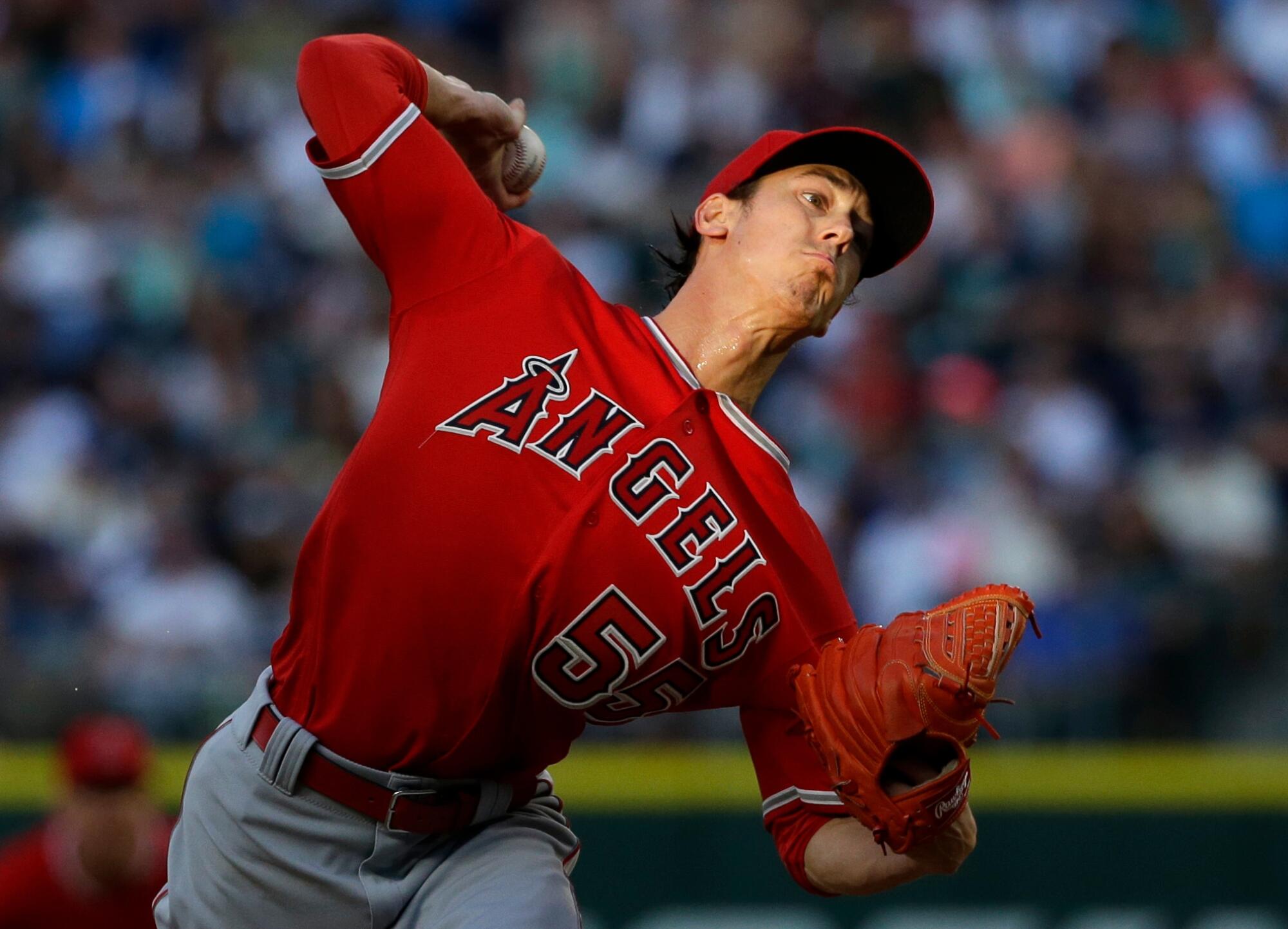
“It’s been seven or eight years since they’ve had a reliable rotation with a deep bullpen,” one former Angels pitcher said. “It’s like they’re trying to stopgap with one-year guys. They’re good for the back end, but pretty much every team that’s contending — even the Rays — has a No. 1 guy.”
The Angels invested $28 million in one-year deals this season for Syndergaard, who is no longer with them, and reliever-turned-starter Michael Lorenzen, who had a 4.94 ERA in 13 starts before going down with a shoulder injury in early July.
The Angels did well to win an intense bidding war for Ohtani, who was limited by elbow surgery to two total starts on the mound in 2019 and 2020 before emerging as an ace in 2021.
But when they failed to sign Cole before 2020, they seemed to repeat the Greinke-Hamilton mistake of a decade ago, signing Rendon — another deal led by Moreno — to a massive contract without adding a top-tier pitcher.
“You can’t decide, ‘Well, we’re gonna go spend money in this area and let the pitching go,’ ” Tuerffs said. “And then when you try to get pitching and you don’t get it, you double-down on the offense, and it doesn’t work out.
“It just feels disjointed, like there’s no plan. And then, right up the freeway, you’ve got [Dodgers president of baseball operations] Andrew Friedman, who has an incredible plan.”
One agent likened the Angels’ rotation-building approach to “throwing darts.” Iannetta doesn’t mind one-year fliers for pitchers because “sometimes you hit on them,” he said. “But if you’re hoping to build a great pitching staff on that alone, you’re really rolling the dice.”
The Angels would not have had to pursue so many free-agent pitchers and high-priced position players if they had drafted, signed and developed a stable of effective arms and potent bats over the last decade. But they have not.
Among the Dodgers’ draft picks from 2010 to 2020 were Corey Seager, Walker Buehler, Cody Bellinger and, in 2016 alone, Will Smith, Gavin Lux, Tony Gonsolin and Dustin May.
In that same decade, the Angels’ most productive pick — Clevinger in 2011 — was traded as a prospect to Cleveland for a forgettable reliever, Vinnie Pestano, in 2014.
The pick that was most productive for the Angels, according to wins above replacement: outfielder Kole Calhoun in 2010. Of all the pitchers the Angels drafted in that decade, none provided even 100 innings in a season for them.
Former scouting director Eddie Bane oversaw one of the best drafts in recent baseball history when he picked Randal Grichuk, Trout, Skaggs, Richards and Patrick Corbin in the first two rounds of 2009.
But Bane was fired after whiffing on a 2010 draft in which the Angels had five of the first 40 picks and used them on Kaleb Cowart, Cam Bedrosian, Taylor Lindsey, Chevy Clark and Ryan Bolden. Among the available talent that June: Christian Yelich, Syndergaard, Nick Castellanos, Andrelton Simmons and James Paxton.
The Angels forfeited first-round picks in 2012 and 2013 for signing Pujols and Hamilton. Most of their top picks since have been lower-risk, lower-ceiling college players such as pitcher Sean Newcomb (2014), catcher Taylor Ward (2015), first baseman Matt Thaiss (2016), shortstop Will Wilson (2019) and Detmers (2020).
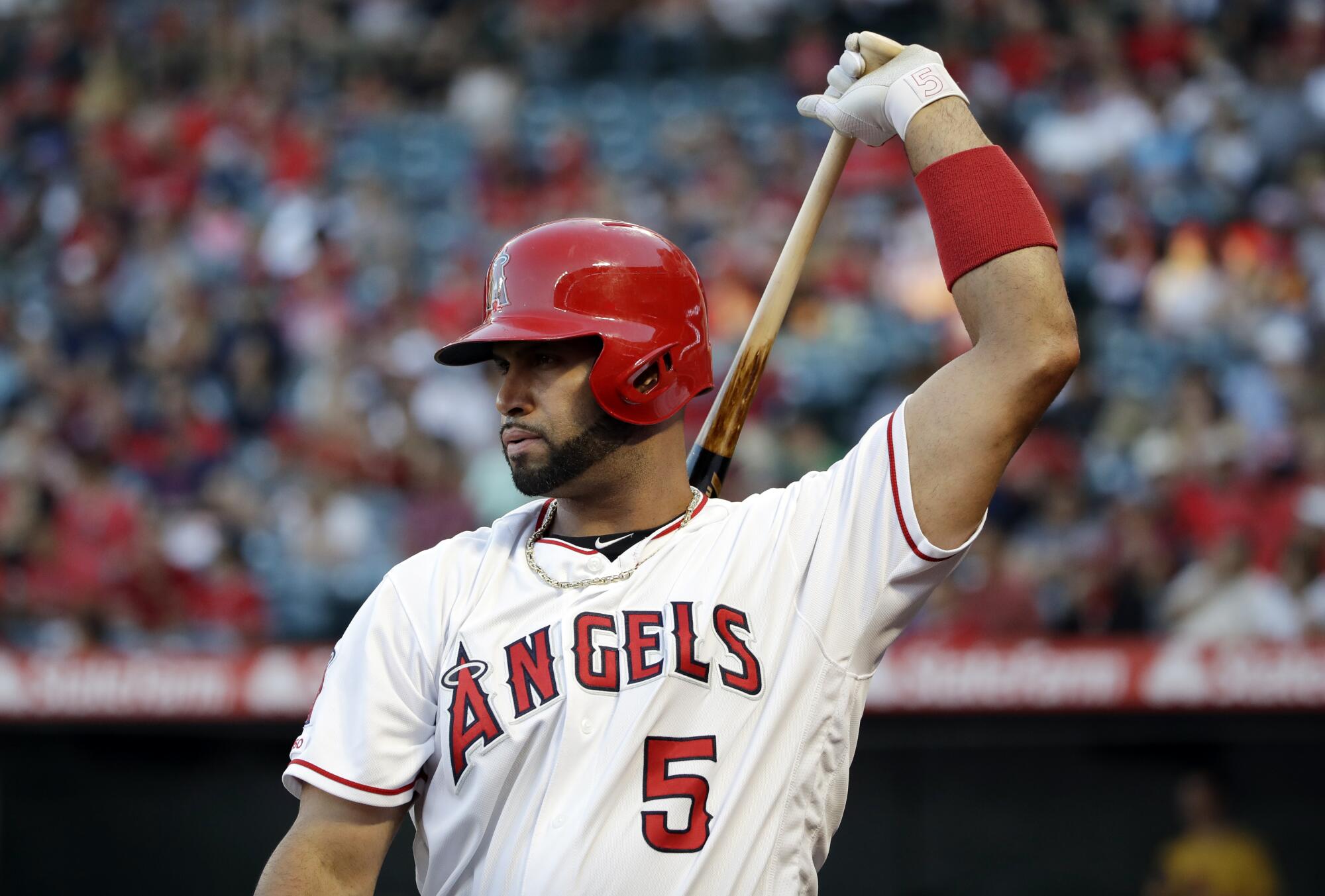
They opted for high-risk, high-ceiling, highly athletic outfielders Jo Adell in 2017 and Jordyn Adams in 2018, but Adell has been mostly overmatched at the plate and erratic in the field in parts of three big league seasons and Adams is at double A.
According to the minor league newsletter Down on the Farm, the Angels have generated the third-least amount of value, as measured by WAR, through the draft since 2010, ahead of only the Detroit Tigers and the Yankees.
“Who are the draft picks who have made an impact in Anaheim? Nobody,” said Rick Ingalls, 70, who spent 21 of his 41 years as a Southern California-based amateur scout with the Angels from 1981 to 2001. “You don’t hit on every guy, but with what you spend on a first-round pick, you better hit on him.
“And the two years they didn’t have first-round picks, that sets you back. It waters down your farm system a bit, because you’re not getting that first-round talent that you’re relying on to get to the big leagues. But that’s an Arte Moreno thing,” Ingalls added, alluding to the owner’s pursuits of Pujols and Hamilton.
A Latin American program that produced the likes of Francisco Rodríguez, Ervin Santana, Kendrys Morales and Aybar in the 2000s has borne even less fruit, the Angels’ most prominent current Latin big leaguers being Suarez, who was signed in 2014, and swingman Jaime Barría, who signed in 2013.
“We haven’t had a Julio Rodríguez or a Juan Soto or a Vladimir Guerrero Jr. come out of our system,” Tuerffs said.
Their biggest investment in Latin America — the $14 million that Dipoto spent on 18-year-old Cuban shortstop Roberto Baldoquin in 2015 — was their biggest bust. Baldoquin hit .244 with 12 homers in 163 games and never rose above double A in five years with the Angels.
Shohei Ohtani and Clayton Kershaw respect each other immensely, and that’s why the players didn’t hold back in their All-Star Game meeting.
“They signed him for a ton of money, and the first day he took batting practice with a wood bat in Tempe, we all looked at each other and were like, seriously?” Iannetta said of Baldoquin. “I’m not the best at projecting out, but he didn’t look like a prospect.”
The Angels are on their third scouting director since 2016, Tim McIlvaine succeeding Ric Wilson (2011-2016) and Matt Swanson (2017-2021) this season, and their third farm director since 2015. Different GMs have brought different scouting and drafting philosophies.
“What I see is the same front-office and dugout instability that has been present throughout the Angels’ history, and there’s nowhere else to go back to except the owner,” said Ross Newhan, the Hall of Fame Times baseball writer who covered the Angels from 1961 until his 2004 retirement.
“Aside from that one really good period in the 1990s, when [then-GM] Billy Bavasi and [scouting director] Bob Fontaine Jr. managed to have a quality draft or two and brought in the core of the 2002 World Series team, there just hasn’t been that large growth out of the system, ever.”
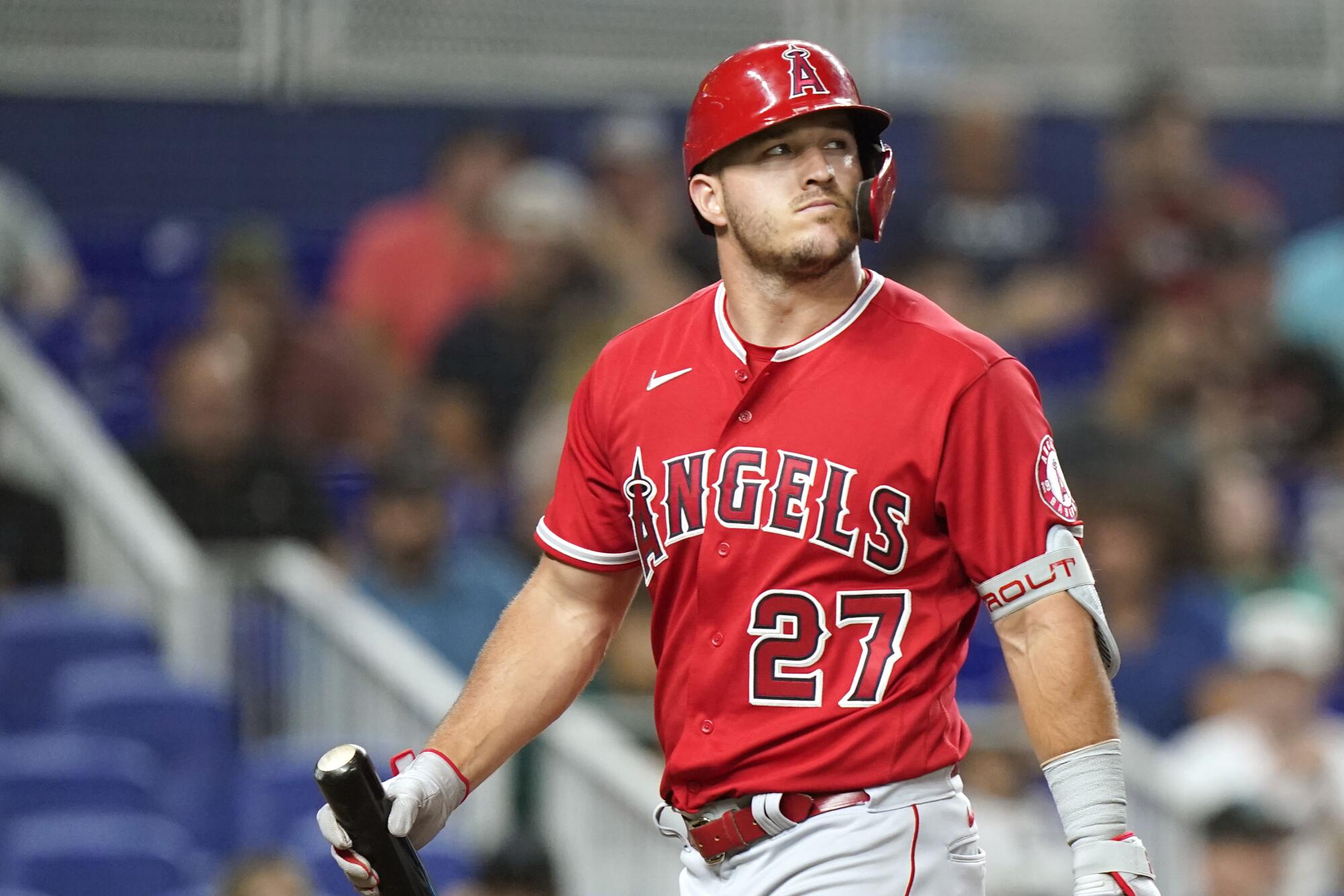
Like the “Win one for the Cowboy” mantra for former owner Gene Autry in the 1980s and 1990s, the current rallying cry for fans of the Angels — and across the country, really — is “Get Trout and Ohtani to the playoffs!” Baseball wants to see the best player and most dynamic player of this generation on an October stage.
But Trout has missed significant chunks of the last five full seasons because of injury, and there is no guarantee Ohtani will be an Angel in 2023.
“For the first time, I’m sitting back and going, ‘Yeah, your window of opportunity is coming to a close,’ ” former Angels outfielder and current team broadcaster Tim Salmon said. “You’ve had two of the greatest players in the game, and you’d think this is when you should have a run of good years.
“But for whatever reason, this could be a missed opportunity, and that is sad when you think about it.”
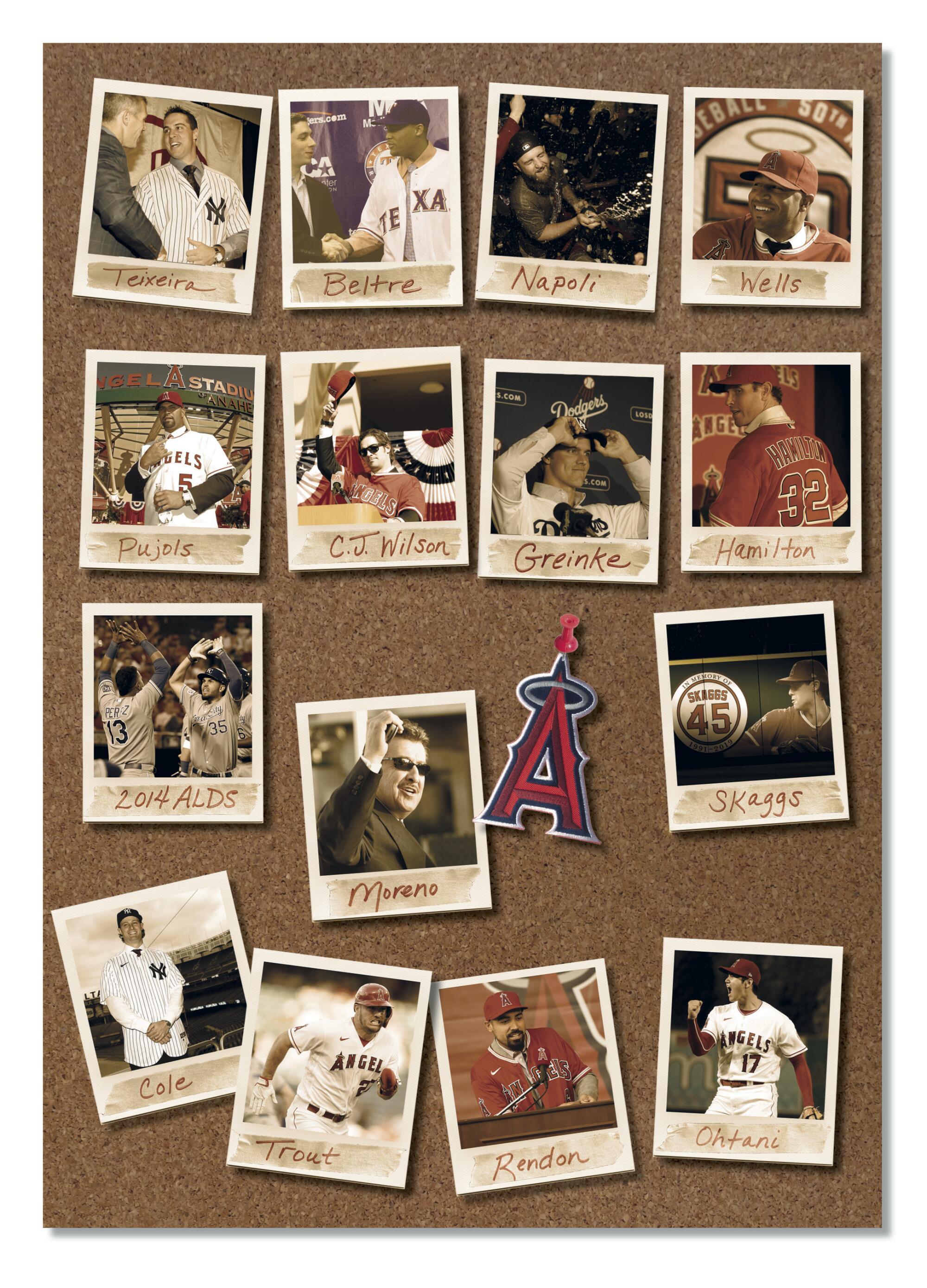
The Angels tried to address their dearth of organizational pitching by using all 20 of their 2021 draft picks on pitchers, including first-rounder Sam Bachman and second-rounder Ky Bush. Among their picks in the recent July draft was Tennessee right-hander Ben Joyce, whose fastball has been clocked at 105 mph.
Moreno has resisted the tear-down-and-rebuilding process that many clubs embark on, but a trade of Ohtani before the end of 2023 could trigger some kind of rebuild.
Retaining Ohtani might also cost more than $40 million a year and could easily push the Angels past the CBT threshold and Moreno — or a new owner, if a sale can be completed quickly — into his discomfort zone.
“I pose this question to people when we talk about it — if you were in Arte’s shoes, what would you do — trade Ohtani and maybe Trout and rebuild, or try to win with them?” Tuerffs said. “I don’t know.
“You just have to hope and pray that Trout and Rendon are healthy, they re-sign Ohtani and some of that pitching Perry drafted starts coming to life, because otherwise, you’re gonna have the same thing over and over and over again.”
Times staff writers Bill Shaikin and Jorge Castillo contributed to this report.
More to Read
Go beyond the scoreboard
Get the latest on L.A.'s teams in the daily Sports Report newsletter.
You may occasionally receive promotional content from the Los Angeles Times.


